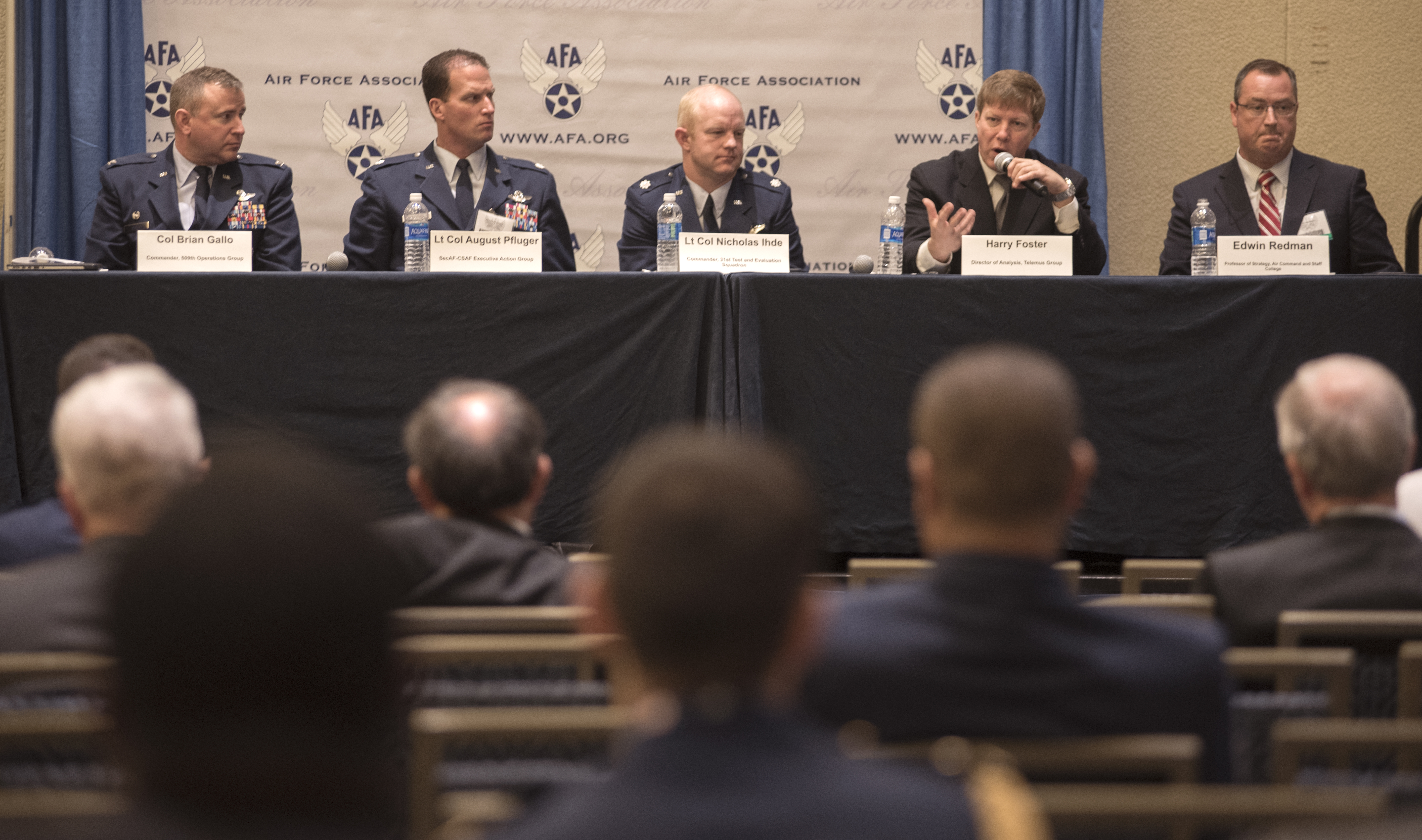
Panelists speak about the evolution of stealth at AFA's Air, Space & Cyber Conference in National Harbor, Md., on Sept. 20, 2017. Staff photo by Mike Tsukamoto.
Rather than state a requirement for “at least” 100 new B-21 bombers, the Air Force ought to be requesting 174 of the jets, in order to field a dozen deployable bombers with each of 10 Air & Space Expeditionary Forces (AEFs), said retired Lt. Gen David Deptula, dean of AFA’s Mitchell Institute.
Chairing a panel on “The Evolution of Stealth” at ASC17, Deptula said the Air Force must conserve its heaviest hitters and add to their numbers.
“What we really need is 120 combat-coded B-21s,” which translates to a fleet of 174 of the jets in order to have some in test, maintenance, training, depot, and some for attrition, he said.
Deptula told Air Force Magazine the 10 AEF construct “remains a viable force-sizing rationale” providing packages of airpower in standard amounts to meet the needs of combatant commanders. However, Chief of Staff Gen. David Goldfein said it may be time to “upgrade” the AEF construct, which he noted was created in the late 1990s. Exactly what the new structure might look remains unclear. Goldfein said the topic will be discussed at the next Corona, or pow-wow of senior Air Force leaders.
The need for aircraft to be able to penetrate anti-access, area denial environments will “only increase,” said Deptula, as adversaries intensify their defenses. Moreover, the AEFs also need “six non-penetrating bombers per AEF” for operations in permissive airspace, like those being flown in Iraq and Afghanistan today. Using the same methodology—about 25 percent of the overall fleet for non-combat status—he reckons this non-penetrating force to be 108 jets, for a grand total of 282 bombers.
The Air Force is working on a Bomber “Vector,” a term it prefers to “Roadmap,” its previous name, which will lay out the planned introduction of the B-21 and the schedule on which USAF will eventually divest its older aircraft.
Global Strike Command chief Gen. Robin Rand said Tuesday at an ASC17 press conference that the plan is coming close to completion. In the stealth panel discussion, Deptula specifically noted that the 20-airplane B-2 fleet—of which only about 14 are available for combat at any given time—is the only system now available that can penetrate heavy air defenses and attack “hardened, deeply-buried” targets with the Massive Ordnance Penetrator weapon. Countries like Iran and North Korea have hidden their nuclear development enterprises in such hardened underground facilities.
Counting its B-1, B-2, and B-52 bombers, the Air Force today has 176 bombers. Rand has previously said he doesn’t think the B-21 will be “additive” to the fleet, given constraints on funding and manpower.